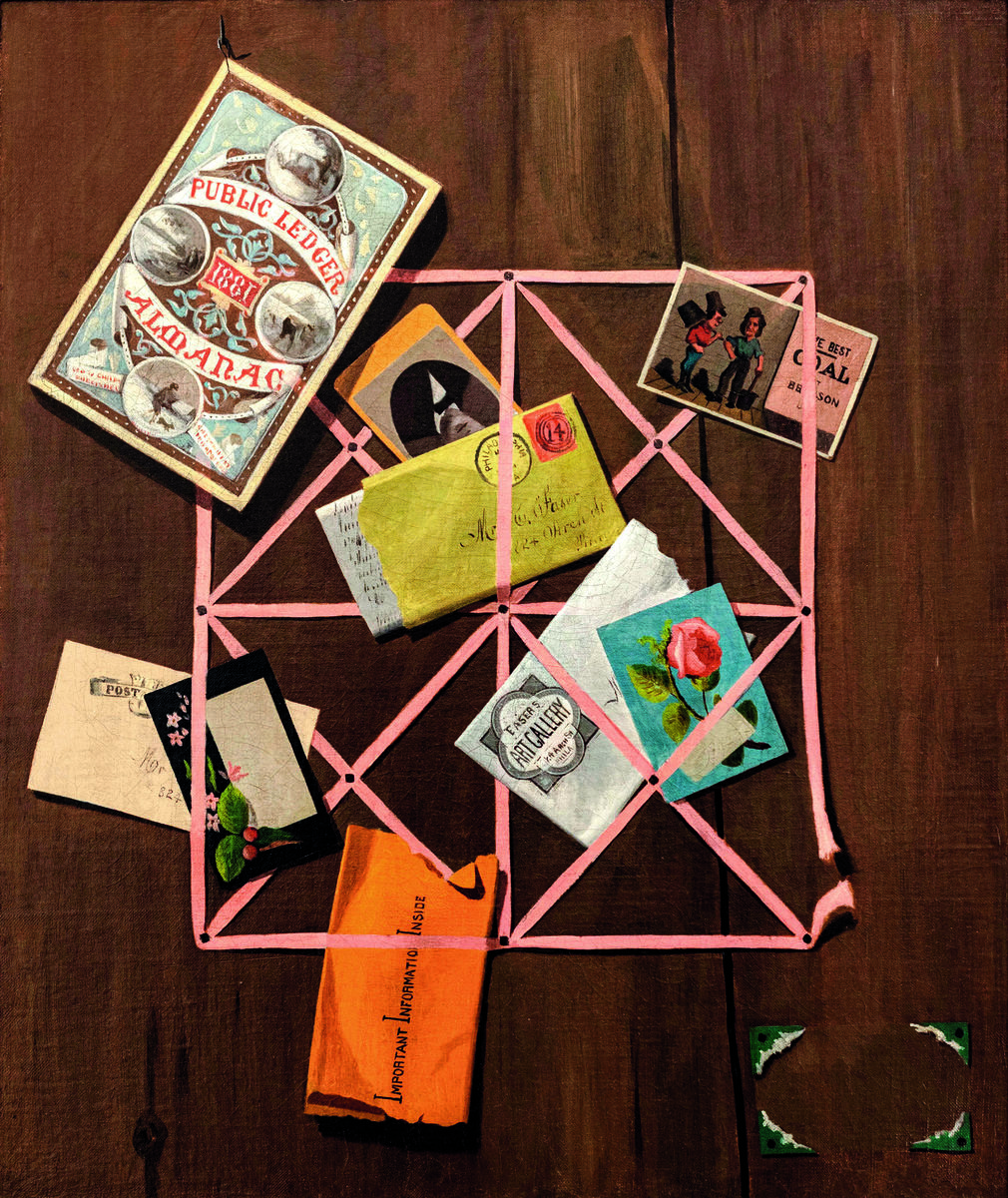Recent Acquisition John Peto’s Office Board for Christian Faser

The Museum has acquired this work in memory of John Wilmerding, Princeton’s inaugural Christopher Binyon Sarofim ’86 Professor in American Art and a major donor to the Museum. Office Board for Christian Faser was a work well known to Wilmerding, who titled his 1983 monograph on Peto—still the standard source on the artist—after a detail it contains: Important Information Inside: The Art of John F. Peto and the Idea of Still-Life Painting in Nineteenth-Century America.
Although Peto occasionally painted portraits and landscapes, the large majority of his work falls into two categories: small-scale tabletop still lifes depicting objects in shallow but three-dimensional space, and larger, more ambitious still-life compositions featuring objects affixed to boards that are oriented both parallel to and close to the picture plane. These images, far fewer in number, minimize the imperative to convincingly render depth and perspective and thus offered Peto an enhanced opportunity for successful illusionism. Especially esteemed among them are the artist’s dozen or so rack paintings, nearly all of which are now in museum collections.
Wilmerding identified two discrete periods during which Peto produced rack pictures, 1879–85 and 1894–1904. He noted, “The earlier of these works were clearly executed as more literal office boards or trade advertisements, often with engaging touches of humor, and generally came about as commissions from neighboring businessmen or friends.” Accordingly, the earlier paintings are distinctive for their lighter palettes and more whimsical effects, exemplified in Office Board for Christian Faser by its bold use of bright color and by the work’s visual puns, including the upside-down photograph—presumably of Faser—tucked behind an envelope bearing his name and the empty envelope beneath it, which clearly contains no information at all. Regarding this item in particular, Wilmerding observed: “The legend on the torn envelope holds out information for us but does not yield it fully. The name and signs and dates in Peto are usually enough to fix a work in time and place, yet they invite the viewer to contemplate secrets within. The fact is that Peto does not reveal the ‘Important Information Inside’ but forces us to see words, shapes and colors for their non-verbal, aesthetic qualities.”
Christian Faser was a Philadelphia dealer of mirrors and frames, objects that, like the illusionistic painting named after him, present images in ways that can both structure and complicate the realities they reflect and contain.
Karl Kusserow
John Wilmerding Senior Curator of American Art